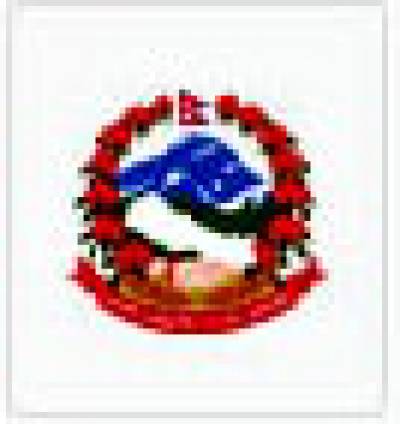MANASLU EXPEDITION
“Mountain of the Spirit” The meaning of Manaslu in Sanskrit is enough to tempt the true adventurous spirit in you to climb this magnificent peak. Manaslu is derived from the Sanskrit word manasa, meaning "intellect" or "soul". At 8,163m (26,781ft) above sea level, Mt. Manaslu is the 8th highest in the world located in the Mansiri Himal, a small but high subrange of the Himalayas in north central Nepal about 100km north west of Kathmandu. This is a serious climbing expedition and is for those climbers with previous high altitude climbs under their belt. It is a technical climb, physically demanding and can be compared with an ascent of neighboring Cho Oyu (8,188m), or Shishapangma (8,027m).
The Mansiri range is also referred to as the Manaslu Himal or the Gurkha Massif. Manaslu Himal also contains Himalchuli (7,893m/25,896ft and Ngadi Chuli (7,871m/25,823ft) both falling within the top 20 highest peaks in the world. Manaslu is 7,000m/23,000ft above the Marsyangdi Valley floor adding to its prominence on the skyline. It is 64km east of Mt. Annapurna.
There is a saying attributed to Ralph Waldo Emerson: “It’s the not the destination, it's the journey”. This is true of this expedition for without the struggle to reach the summit you may not appreciate the adrenalin rush and thrill once you reach there. Your journey begins at Besisahar (760m) and then follows the trail to Dharapani (1860m), Tilje (2300m), Bhimthang (3720m) where we stop for a rest and acclimatization day. Leaving Bhimthang we head to Samdo (3872m) via Larke Pass (5160m), Samagaun (3541m) and on to Manaslu Base Camp (4700m). We will spend around 20 days here where we will rehearse and prepare for the assault on the summit. We will check and re-check our equipment and make several higher climbs and returns to base camp in order to better acclimatize.
After reaching the summit and soaking in the views of the surrounding giant peaks we will head back to Base Camp and continue back to Samagaun (3541m), Namrung (2670m) , Philim (1606m), Machha Khola (883m) and Arughat (606m) from where we drive back to Kathmandu.
There are several routes to take to climb to the summit from Manaslu Base Camp (4,700m), but most attempt it coming from the direction of Samagaun after trekking along the Budhi Gandaki Valley and then head up the north-east ridge. There are a number of snowy slopes and an arête to cross before reaching the summit. An arête can be described as a narrow ridge or saddle. After this there is a steep climb to the summit from where you will undoubtedly have some of the most stunning views imaginable of the Himalayas.
The most common problem of climbing these peaks can be altitude sickness, hence the reason for taking time along the trail leading to Base Camp, and from Base Camp to repeatedly climb and ascend to avoid any complications. We have several days set aside in the event the weather is unsuitable for the ascent to the summit.
Sherpa Expedition and Trekking recommends that you have some serious climbing experience before attempting this climb. A couple of 6000m ascents would be advisable, as there is ice sheets and snow to traverse on your way to the summit. It is also advisable that you have experience in the use of crampons and the use of fixed lines. Most of all you will need the endurance and will that climbers need to persevere and keep climbing despite the physical discomfort. The ideal time to make this climb is in March, April or October and November when the snow is still compacted thus making it safer and easier to traverse.
Sherpa Expedition and Trekking takes care of everything, from permits, fees and all accommodation along the trail. Your safety and enjoyment are always our main concern. After more than 40 years in the trekking and climbing business we understand the difference between a good experience and a great experience. Our reputation speaks for itself.
ITINERARY
Day 1 : Arrival to Kathmandu & Transfer to the Hotel (1,400m)
Day 2 : Rest in Kathmandu, Expedition briefing and preparing
Day 3 : Drive from Kathmandu to Besisahar (760m)
Day 4 : Trek from Besisahar to Dharapani (1,860)
Day 5 : Trek from Dharapani to Tilije (2,300m)
Day 6 : Trek from Tilije to Bhimthang (3,720m)
Day 7 : Acclimatization at Bhimthang (rest day)
Day 8 : Trek from Bhimthan to Samdo (3,872m) via Larke Pass(5,160m)
Day 9 : Trek from Samdo to Sama Gaun (3,541m)
Day 10 : Trek from Sama Gaun to Manaslu Basecamp (4700m)
Day 11 - 32 : Climbing Period [Base Camp - Manaslu Summit(8,163m)– Base Camp)
Day 33 : Trek from Manaslu Base Camp to Sama Gaun (3,541m)
Day 34 : Trek from Sama Gaun to Namrung (2,670m) to Arughat (Heli) if requested.
Day 35 : Trek from Namrung to Philim (1,606m)
Day 36 : Trek from Philim to Machha Khola (883m)
Day 37 : Trek from Machha Khola to Arughat (606m)
Day 38 : Drive from Arughat to Kathmandu & transfer to the Hotel
Day 39 : Leisure Day in Kathmandu
Day 40 : Transfer to International Airport for final departure
SERVICES
Full Board Service Includes
- All arrival and departure transfer services to and from KTM international airport with other necessary transport as per itinerary.
- Assistance at KTM international airport by Sherpa Expedition and Trekking during your arrival and departure.
- 4-night hotel accommodation in Kathmandu on a B&B basis.
- Experienced and government-licensed trekking and climbing Sherpa guide during the trekking and climbing period.
- An appropriate number of porters during the trekking period.
- Land transportation from Kathmandu-Arughat-Kathmandu for all climbing members, Sherpa guide, liaison officer and kitchen staff.
- Sherpa Expedition and Trekking kitchen tent, storage tent, dining tent, client tents, toilet tents, tables, chairs and cooking utensils for base camp.
- Common climbing equipment such as Rope, ice bars, ice screws, and snow bar.
- 3 meals a day: Breakfast, lunch, and dinner with tea/coffee.
- Accommodation at hotel/lodge/guest house or tent camps during the trekking period.
- All camping accommodation for members and staff during the trekking and climbing period. You will be sharing sleeping quarters with one other member.
- All food and fuel for base camp and higher camps during the climbing period.
- 60kg baggage allowance per person during the trekking period. This will be carried by porters/mules.
- Daily weather report services from Seattle, Washington based company.
- Services of chef and kitchen assistant at advance base camp.
- Trekking Permit (Manaslu Conservation Park entry fee).
- TIMS card (Trekking Information Management System).
- Manaslu restricted area trekking permit during the expedition period.
- Expedition Royalty and permit of Nepal government to climb Mt. Manaslu.
- Nepalese Government Royalty.
- One experienced, trained, government licensed and 3-time summiteer climbing guide (Sherpa) per person.
- All wages, equipment, medical and accident insurances for all involved staffs during the trekking and climbing period.
- Helicopter rescue insurance for all involved expedition staff.
- Medical consultation services at the base camp with the HRA clinic at base camp.
- Equipment allowances and wages for climbing Sherpas, cooks, kitchen assistant and government liaison officer.
- First aid medical kits for the group and the staff.
- Satellite phone carried by guide for communication. Available to clients with a cost of $3USD per minute.
- Appropriate high altitude food for all clients and staff at base camp and above as required.
- Required fixed and dynamic rope during the climbing period.
- The heater will be provided at the base camp for the dining tent.
- Emergency oxygen mask and regulator provided upon request of the client with requirement appropriate charge.
- Each client will have an individual tent available in the Manaslu advanced base camp.
- Solar panel for light and electronics charging.
- All tents for camp 1, 2 and 3. Icefall charges.
- Gamow Bags (Portable hyperbaric chambers) for high altitude sickness.
- 2 Bottles (8L) of Poisk Oxygen will be provided for each member.
- The latest model of Summit or Top out system mask and regulators will be provided.
- We provide Sherpa's tents, food for climbing and insurance.
- Free assistance service for cargo clearance and duties.
- EPI cooking gas and stove will be provided in camp one, three and South Col for cooking food.
- The generator will be providing to back-up the lighting in base camp.
- Transportation of food supply from Kathmandu to base camp by porter/mules.
- Our service charge and government taxes levied in Nepal.
- Complete pre-departure information.
- Flight ticket reconfirmation and visa extension procedure services.
- Farewell dinner in a typical Nepali restaurant with cultural show in Kathmandu before departure.
- Sherpa Expedition and Trekking special gift
Full Board Service Excludes
- Lunch and dinner during your stay in Kathmandu (except for the farewell dinner).
- Any packed food/snacks, aerated drinks, energy drinks, mineral water, alcohol, cigarettes, chocolates, or any other food consumed beyond the prescribed breakfast, lunch and dinner.
- Expenses incurred towards usage of landlines, mobiles, walkie-talkies, satellite phones, and internet expenses.
- Clothing, packing items or bags, personal medical kit, personal trekking gear.
- Any extra expenses arising out of various/unforeseen situations like natural calamities, landslides, political disturbances, strikes, changes in government regulations, etc.
- Transportation services include only what is listed on the itinerary. Any extra distance traveled will be appropriately charged.
- Any additional staff other than specified.
- Rescue, repatriation, medicines, medical tests and hospitalization expenses.
- Medical insurance and emergency rescue evacuation if required.
- Travel insurance and helicopter rescue.
- Walkie-talkies
- Filming permit (if you have a special camera).
- Personal climbing gear.
- Nepal custom duty for import of expedition equipment.
- Items of personal nature, laundry expenses, tips.
- Tips, gifts, souvenirs.
- Airfare of international flights.
- Nepal entry visa fee (easy to obtain the visa on arrival at Tribhuvan International Airport – Kathmandu). $30 USD for 15-day, $50 USD for 30 Days, and $125 USD for 90 Days visa.
- Any extra services, products, offers or activities which are not mentioned in the itinerary.
- Any other item not included in the cost includes section.
EQUIPMENTS
Travel Documents
- Valid Passport
- Credit Cards
- Pp Size Photo (4 Pieces)
- Insurance Paper And Contact Address.
- Family Members / Company’s Contact Address
Foot Wear
- Kailas / Lasportiva / Millet (Summit Shoe)
- Normal Socks (5-6 Pairs)
- Summit Socks (2 Pairs)
- Trekking Shoes (1 Pair)
- Camp Booties (1 Pair)
- Basecamp Slipper (1 Pair)
Upper Body
- Light Weight Top / Thermo Coat (2-3 Layers)
- Mid Weight Top (2-3 Layers)
- Heavy Weight Top (2 Layers)
- Fleece Jacket (1)
- Gore Text Jacket (1)
- Down Jacket (1)
- Wind Proof Jacket
- Cotton T-Shirt For Base Camp. (2-3)
Lower Body
- Light Weight Long Under Pants (2-3 Pairs)
- Under Wear (5-7 Pairs)
- Mid Weight Long Under Pants (2-3 Pairs)
- Heavy Weight Long Under Wear
- Gore Text Pant. (1)
- Down Pants. (1)
- Water Proof Pant. (1)
Head
- Sun Cap
- Desert Cap
- Balaclava
- Fleece Hat
- Neck Gaiter (2-3)
Hands
- Thin Fleece Gloves (2 Pairs)
- Wind Stopper Fleece Gloves
- Heavy Gloves (Mitten)
- Summit Gloves
Sleeping Bags
- Sleeping Bag - 20 Degree Celsius (For Base Camp)
- Down Sleeping Bag - 20 To -40 Degree Celsius (Extreme Comfort)
- Thermarest Mattress (Cell Foam)
- Thermarest Mattress (Inflatable)
Climbing Equipment
- Climbing Helmet
- Down Suit (Kailas / Marmot / Mountain
- Hardware / North Face / Millet )
- Crampons (Fit with Boot)
- Ice Axe
- Harness
- Atc Guide
- Jummer / Ascender
- Lock Carabiner (3)
- Unlock Carabiner (3)
- Tape Slings (2)
- Prusik Loops (1)
- Snow Goggle
- Head Light (4 Pairs Rechargeable Batteries Recommended)
- Satellite Phone
- Hand Warmer (If Possible)
Bag Packs
- Rucksacks 45L - 55L
- Duffle Bag 90 L -120 L (2 Pieces)
- Water Proof Stuff Sacks Large (2 Pieces)
- Water Proof Stuff Sacks Small (2 Pieces)
Sun Stuffs
- Banana Boat/ Nivea Sun Cream -50 (Spf)
- Lip Guard -20 / -50 (Spf)
- Sun Glasses (UV Protection)
- Glaciers Glasses (UV Protection)
Toiletries
- Hand Disinfectant
- Wet Tissue
- Toothpaste
- Toothbrush
- Soap
- Shampoo
- Garbage Bag
Eating & Drinking
- Water Bottle (2)
- Thermos
- Mug
- Spoon/ Fork
- Bowl
Medical
- Brufen / Ibuprofens
- Antibiotic
- Diamox
- Paracetamol
- Handy Plaster
- Crack Bandage
- Tincture Iodine
Miscellaneous
- Walking Stick
- Pocket Knife (Swiss)
- Umbrella / Rain Coat
GOOD TO KNOW
Here are some important details to know about the Manaslu Expedition:
1. Mountain: Manaslu is the eighth highest mountain in the world, located in the Mansiri Himal range in Nepal. It stands at an elevation of 8,163 meters (26,781 feet) above sea level.
2. Difficulty Level: The Manaslu Expedition is considered a challenging climb, requiring technical skills, experience in high-altitude mountaineering, and the ability to handle extreme weather conditions.
3. Duration: The expedition typically takes around 4-6 weeks to complete. This includes acclimatization periods, climbing days, and rest days.
4. Best Time to Climb: The best time to attempt the Manaslu Expedition is during the spring (April-May) and autumn (September-October) seasons. These months offer more stable weather conditions, better visibility, and lower avalanche risks.
5. Climbing Permits: Climbers need to obtain a climbing permit from the Nepalese government to climb Manaslu. The permit is issued through authorized trekking agencies and requires necessary documentation, including a climbing itinerary and proof of insurance.
6. Training and Experience: Prior mountaineering experience is essential for joining the Manaslu Expedition. Climbers should have experience in high-altitude climbs, glacier crossings, and technical ice and rock climbing.
7. Guides and Support: It is highly recommended to hire an experienced guide or join a guided expedition for the Manaslu Expedition. Guides provide essential support, expertise, and safety measures throughout the climb.
8. Physical Fitness: Climbers need to be in excellent physical condition for the Manaslu Expedition. Regular cardiovascular and strength training, as well as high-altitude acclimatization, are necessary to cope with the demanding physical challenges of the climb.
9. Cost: The cost of the Manaslu Expedition can vary depending on factors such as the expedition duration, guide services, equipment, permits, and logistics. On average, the cost can range from $20,000 to $30,000 per person.
10. Local Culture and Environment: Manaslu is located in a region with rich cultural heritage and natural beauty. It is important to respect the local culture and environment, including following responsible trekking and climbing practices, minimizing waste, and supporting local communities.
Remember, the Manaslu Expedition is a demanding and serious endeavor. Proper preparation, training, and adherence to safety protocols are crucial for a successful and safe climb.
MAP
PHOTOS/Videos
Departures
Select a departure month
Fill out the form below and a Travel Expert will reach out to create your perfect tour.
FAQS
How long does it take to climb Mount Manaslu?
The duration of the Manaslu Expedition can vary depending on various factors such as weather conditions, team experience, and acclimatization. On average, it takes around 4-6 weeks to complete the expedition.
What is the difficulty level of the Manaslu Expedition?
The Manaslu Expedition is considered a challenging climb. It requires technical climbing skills, experience in high-altitude mountaineering, and the ability to handle extreme weather conditions. It is less crowded than other popular peaks in Nepal, but it still presents significant challenges.
What is the best time to climb Mount Manaslu?
The best time to attempt the Manaslu Expedition is during the spring (April-May) and autumn (September-October) seasons. These months offer more stable weather conditions, better visibility, and lower avalanche risks.
Is a climbing permit required for Mount Manaslu?
Yes, climbers need to obtain a climbing permit from the Nepalese government to climb Mount Manaslu. The permit is issued through authorized trekking agencies and requires necessary documentation, including a climbing itinerary and proof of insurance.
Do I need previous mountaineering experience to join the Manaslu Expedition?
Yes, previous mountaineering experience is essential for joining the Manaslu Expedition. This expedition is considered challenging and technical, and climbers are expected to have prior experience in high-altitude mountaineering.
Is it possible to hire a guide or join a guided expedition for Mount Manaslu?
Yes, it is highly recommended to hire an experienced guide or join a guided expedition for the Manaslu Expedition. A guide will provide essential support, knowledge, and safety measures throughout the expedition.
What kind of physical fitness is required for the Manaslu Expedition?
The Manaslu Expedition requires climbers to be in excellent physical condition. Regular cardio and strength training, as well as high-altitude acclimatization, are necessary to cope with the demanding physical challenges of the climb.
How much does the Manaslu Expedition cost?
The cost of the Manaslu Expedition can vary depending on factors such as the expedition duration, guide services, equipment, permits, and logistics. On average, the cost can range from $20,000 to $30,000 per person.
Are there any age restrictions for the Manaslu Expedition?
There is no specific age restriction for the Manaslu Expedition. However, climbers are required to be physically fit, have previous mountaineering experience, and be able to handle the challenges of high-altitude climbing.
What safety measures are in place during the Manaslu Expedition?
Safety is a top priority during the Manaslu Expedition. Climbers are advised to follow all safety protocols, including proper acclimatization, using appropriate climbing gear, and being aware of potential risks such as avalanches and altitude sickness. Experienced guides and support staff also play a crucial role in ensuring safety during the expedition.
Latest Traveller’s Reviews
Travel experiences of our clients who recently returned from their trips.
100%
Based On 2 Reviews
Jackie Doran
Australia
October 19, 2021
Challenging Peaks, Unforgettable Moments, and a Remarkable Team
Choosing the Manaslu Expedition as my first 8000-meter climb was a decision that exceeded all my expectations. The team I joined was not only highly skilled and experienced but also incredibly supportive and encouraging. From the moment we embarked on our journey, I felt a sense of camaraderie and knew that together, we would conquer the majestic Manaslu. The camping experience on the Manaslu Expedition was exceptional. The cook on our team prepared delicious and nourishing meals that provided us with the energy and sustenance we needed to tackle the demanding terrain. Despite the rugged conditions, the cook's ability to create such flavorful dishes in remote locations was truly commendable. The meals became a source of comfort and motivation, reminding us of the importance of self-care and nourishment during our challenging ascent. The organization and coordination of the Manaslu Expedition were flawless. Every aspect, from logistics to safety measures, was meticulously planned and executed. The team's attention to detail and commitment to our well-being allowed us to focus solely on the climb and fully embrace the beauty of our surroundings. This level of organization created a supportive and positive environment, fostering a sense of unity among the team members. The Sherpa expedition guide on the Manaslu Expedition was an invaluable asset throughout our journey. Their extensive knowledge of the mountain and mountaineering techniques were evident in their guidance and support. They not only led us safely through the treacherous terrain but also provided valuable insights and encouragement along the way. Their expertise and friendly demeanor created a sense of reassurance and made the journey even more enjoyable. The views offered by the Manaslu Expedition were simply breathtaking. From the moment we set foot on the trail, we were surrounded by towering peaks, vast glaciers, and pristine landscapes. The beauty of the Himalayas unfolded before our eyes, leaving us in awe of nature's magnificence. Reaching the summit and witnessing the world from such great heights was an experience that left me humbled and profoundly grateful. I wholeheartedly recommend the Manaslu Expedition to anyone seeking a journey of endurance and beauty. The combination of a supportive team, exceptional camping cuisine, flawless organization, and a knowledgeable guide makes it an extraordinary adventure. Whether it's your first 8000-meter expedition or not, Manaslu will push your limits, reward you with breathtaking views, and leave you with memories that will last a lifetime. Don't miss out on this incredible opportunity to challenge yourself, embrace the beauty of the Himalayas, and discover the strength within you.
Ellen Andrews
Belgium
May 17, 2021
Awe-Inspiring Peaks, Unforgettable Moments, and an Exceptional Team
Embarking on my first 8000-meter expedition, I chose the Manaslu Expedition, and it turned out to be an experience beyond my wildest dreams. The team I joined was not only highly skilled and experienced but also incredibly supportive and encouraging. From the moment we started our journey, I knew I was in good hands, surrounded by like-minded individuals who shared a passion for mountaineering and a determination to conquer the mighty Manaslu. The camping experience on the Manaslu Expedition was outstanding. The cook on our team prepared delicious and nourishing meals that provided us with the sustenance we needed to tackle the challenging terrain. Despite the harsh conditions, the cook's ability to create such flavorful dishes in remote locations was truly commendable. The meals became a source of comfort and motivation, fueling our bodies and spirits throughout the expedition. The organization and coordination of the Manaslu Expedition were impeccable. Every aspect, from logistics to safety measures, was meticulously planned and executed. The team's attention to detail and commitment to our well-being allowed us to focus solely on the climb and immerse ourselves in the breathtaking surroundings. This level of organization instilled confidence and created a sense of camaraderie among the team members, making the journey even more enjoyable. The Sherpa expedition guide on the Manaslu Expedition was an invaluable asset. Their extensive knowledge of the mountain and mountaineering techniques were evident in their guidance and support. They not only led us safely through the treacherous terrain but also provided valuable insights and encouragement along the way. Their expertise and friendly demeanor created a positive and reassuring atmosphere, allowing us to push our limits and achieve our goals. The views offered by the Manaslu Expedition were nothing short of spectacular. From the moment we set foot on the trail, we were surrounded by awe-inspiring peaks, pristine glaciers, and breathtaking landscapes. The beauty of the Himalayas unfolded before our eyes, leaving us in awe and reminding us of the raw power and grandeur of nature. Reaching the summit and standing atop the world was a moment of triumph and a memory that will forever be etched in my heart. I wholeheartedly recommend the Manaslu Expedition to anyone seeking an adventure of a lifetime. The combination of a supportive team, exceptional camping cuisine, flawless organization, and a knowledgeable guide makes it an extraordinary experience. Whether it's your first 8000-meter expedition or not, Manaslu will test your limits, reward you with breathtaking views, and leave you with memories that will last a lifetime. Don't miss out on this incredible opportunity to challenge yourself, discover your inner strength, and witness the unmatched beauty of the Himalayas.
People Considering This Package Right Now Check availability






















